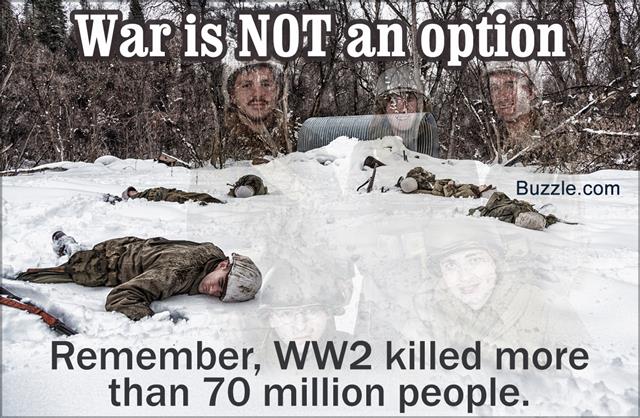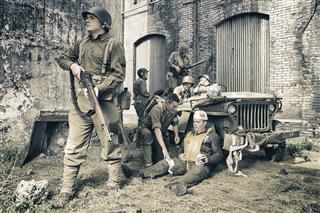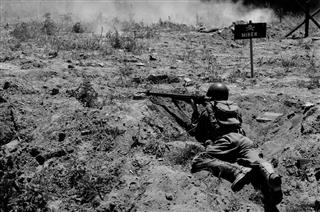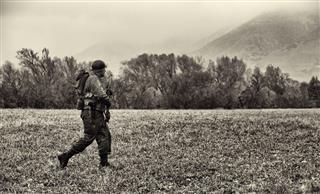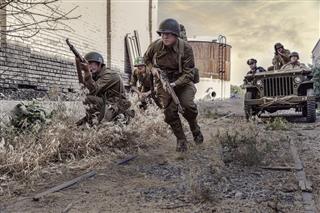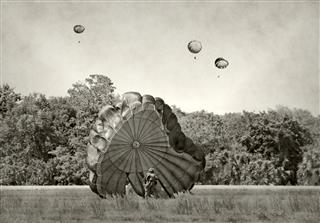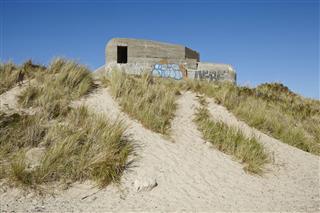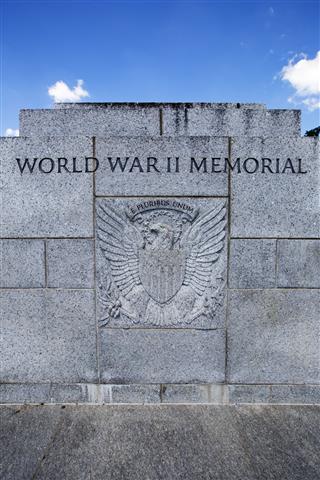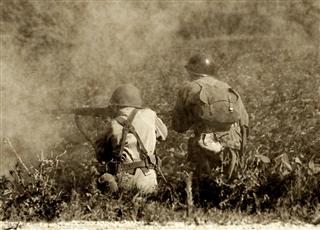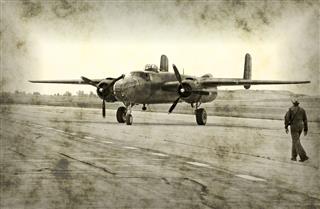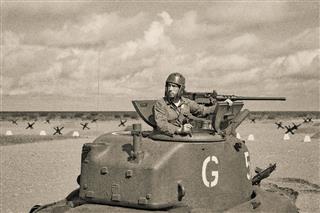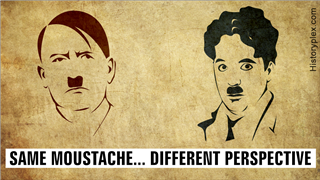
The Second World War led to major worldwide political and social changes. This article covers the most vital facts about the deadliest war the world has ever witnessed.
The 20th century witnessed two of the most horrific wars in the history of the world, namely the First (WWI) and the Second World War (WWII). WWI was fought from 1914 to 1918. It was fought on several fronts, including major parts of continental Europe, China, Pacific Islands, and the western coasts of the Americas. WWII was fought from 1939 to 1945, and centered around Europe, North Africa, and the South Pacific.
A massive number of countries, being under the rule of the great powers were influenced by WWII, and factoring in civilian casualties, it is the deadliest war in human history.
Trivia
- World War II has its roots in the aftermath of the First World War. The Treaty of Versailles, a peace treaty signed in 1919, left Germany neither pacified nor substantially weakened. This led to unrest in Germany.
- One year before the war began, the British government distributed nearly 40 million gas masks to citizens.
- WWII is considered to have begun with the German invasion of Poland on September 1, 1939.
- Germany had built more than 300 concentration camps by 1942.
- The most terrible aspect of WWII was the Holocaust, a planned genocide of 6 million European Jews by ruling Nazis. Adolf Hitler was an extreme antisemitic who wanted to establish a New Order of racially ‘pure’, Germanic races. Approximately 6 million Jews and up to 10 million people of other races that Hitler considered inferior, such as the Romani, were killed by methods such as gassing.
- The major powers in the world formed two alliances during the war:
- “The Allied Powers”, comprising the Soviet Union, the US, Britain and its Dominions, France, and China.
- “The Axis Powers”, comprising Germany, Italy, Japan, Romania, Bulgaria, and Hungary.
- Turkey, an ally of Germany in WWI, declared neutrality along with Spain, Portugal, Sweden, and Switzerland.
- The Battle of Stalingrad started on August 23, 1942. This war was remarkable for its blatant disregard for civilian lives, and the frequency of close quarters combat.
- The war between Germany and the Soviet Union, called the Eastern Front, was the largest theater of land war in history. Up to 30 million people were killed on the Eastern front alone!
- The German soldiers on the Eastern front often replaced their weapons with the Soviet weapons they captured, since they found the Red Army had superior weapons.
- The Battle of Stalingrad was a crucial moment in the War. This was a major defeat for Germany. They never recovered from it, rapidly conceding large portions of their Eastern territory to the Red Army, which eventually captured Berlin.
- The Soviet Union went on to become a post-war superpower, dividing the world’s alliances and starting the Cold War.
- The official surrender of Germany was signed on May 8, 1945, about a week after Hitler had committed suicide.
- In spite of this, the Imperial Japanese Army kept fighting on the eastern front.
- May 8 is celebrated in the West as Victory in Europe, or VE Day.
- In Russia, it is celebrated on May 9.
- In anticipation of the predicted Allied invasion, Japan had given up wasting battle resources on Allied air raids.
- The atomic bombing of Hiroshima and Nagasaki was the first and, as yet, only use of nuclear weapons in warfare.
- Six days after the bombing of Nagasaki, the Japanese government, led by Emperor Hirohito, surrendered.
- With Japan’s surrender, war on the eastern front ceased.
- The Second World War took more lives than any conflict in human history, killing 50-70 million people.
- Erwin Rommel, one of the Wehrmacht’s Field Marshals, was praised for his humane way in war. Unlike most other Nazi divisions, Rommel’s corps were not accused of war crimes, and treated their prisoners honorably. He even ignored commands to kill the Jews among the people he captured.
- Rommel was proficient in desert warfare, and was known as the Desert Fox.
- Hitler forced Rommel to commit suicide by ingesting a cyanide pill.
- Paul Tibbets, an American pilot, was the man who dropped the atomic bomb called ‘Little Boy’ on Hiroshima on August 6, 1945.
- Hermann Gerdau was the man who officially ‘started’ the Second World War. He was a gunner on a German ship which had targeted a Polish naval base.
- The Germans had designed and were in the process of manufacturing the heaviest armored vehicle ever, the Panzer VIII tank. Ironically, the model was called Maus, German for ‘mouse’! The incomplete product was confiscated by the advancing Russians.
- The Polish Army II Corps employed a bear in their artillery supply unit. The bear, who was adopted by the 22nd Artillery Supply Company, was called Wojtek, and was an inseparable part of the Company. He helped the company move ammunition, and was made the emblem of the 22nd Artillery Supply Company owing to his popularity. He liked beer, and ate and smoked cigarettes!
- Wojtek the bear is extremely popular in Poland and Scotland, where he spent his last days.
- An American ship, the USS “Laffey (DD-724)”, survived 6 Kamikaze dive-bombing attacks! It acquired the nickname ‘The Ship That Would Not Die’.
- Another American ship, the USS “Phoenix (CL-46)”, survived the Pearl Harbor attack.
- It was later destroyed under the name ARA “General Belgrano” by the British in the Falklands War, having been commissioned into the Argentine navy.
- The Russians had trained dogs to seek out the undersides of tanks with explosives attached to their body. The dogs were supposed to seek out the German tanks, which could then be blown up from underneath.
- However, the Russians had trained the dogs with diesel-powered tanks; the dogs were reluctant to venture under the gasoline-powered Wehrmacht tanks. They got scared and ran back towards the Russian trenches, killing Russian soldiers when the explosives blew up as they jumped back in.
- Joseph Stalin’s real surname was Dzhugashvilli (also spelled ‘Djugashvilli’ and ‘Jugashvilli’). ‘Stalin’ is always called a moniker, meaning ‘Man of Steel’.
- The infamous Nazi salute was not mandatory for Wehrmacht soldiers until the unsuccessful plan to assassinate Hitler in 1944. Prior to that, the German army used regular military salutes.
How WWII Influenced Media
- The Oscar-winning Steven Spielberg epic “Schindler’s List” was inspired by Oskar Schindler, a German businessman who saved thousands of Jews from the Nazi concentration camps.
- This is probably the most famous film depicting WWII.
- Other popular war films include “Saving Private Ryan”, also directed by Spielberg, “The Great Escape”, and “Enemy At The Gates”.
- Media was heavily used for propaganda by both parties in wartime.
- Films such as “Triumph des Willens” (Triumph of the Will) and “Der Ewige Jude” (The Wandering Jew) are prime examples of Nazi propaganda films.
- Conversely, many films (feature and short) were commissioned by the Allied states to serve as tools for propaganda. Some notable examples are “Christmas Under Fire” (1941), “The Battle of Midway” (1942), and “December 7th” (1943).
- The US used 200,000 designs of anti-Nazi propaganda posters during the war.
- Cartoons and animated short films were the prime method of war propaganda in the US.
- Disney was helped by the wartime propaganda filmmaking. The company had been under debt and close to bankruptcy, but was bailed out by an almost 150,000 USD fee paid by the government for 32 short propaganda films.
- The Second World War continues to be a popular subject (or a background to the main subject), with acclaimed TV series such as “Band Of Brothers” and “The Pacific” being based on the experiences of actual soldiers, and even films such as “The Wolverine” (2013) using WWII as a major plot component.
Facts about Hitler
- Adolf Hitler was the Führer of Germany and an ardent believer in the concept of Nazism. Hitler was born in Austria, but was fascinated by German nationalism and disappointed by the ruling Habsburg Monarchy of Austria.
- As a young man, Hitler opted to fight for Germany in World War I.
- It is astonishing that Hitler, who had no political connection with Germany until WWI, rose to such a level of prominence in German politics and inflicted atrocious horror upon the world.
- Adolf Hitler became the ‘Chancellor of Germany’ in 1933 and proclaimed himself the ‘Führer of Germany’ in 1934.
- Austria and the Sudetenland region of Czechoslovakia were annexed to Nazi Germany by the Munich Pact in 1938.
- Following the German invasion of Poland, France and Britain declared war on Germany.
- By early 1942, in the peak of its power, Germany controlled (conquered) the entire continental Europe with the exception of Russia and the neutral countries.
- The major turning point of the war was in 1942, as the incumbent German army suffered heavy losses and had to retreat from two crucial fronts: North Africa and Stalingrad.
- In 1945, the Soviet forces reached Berlin. Hitler is believed to have committed suicide along with his wife Eva Braun.
